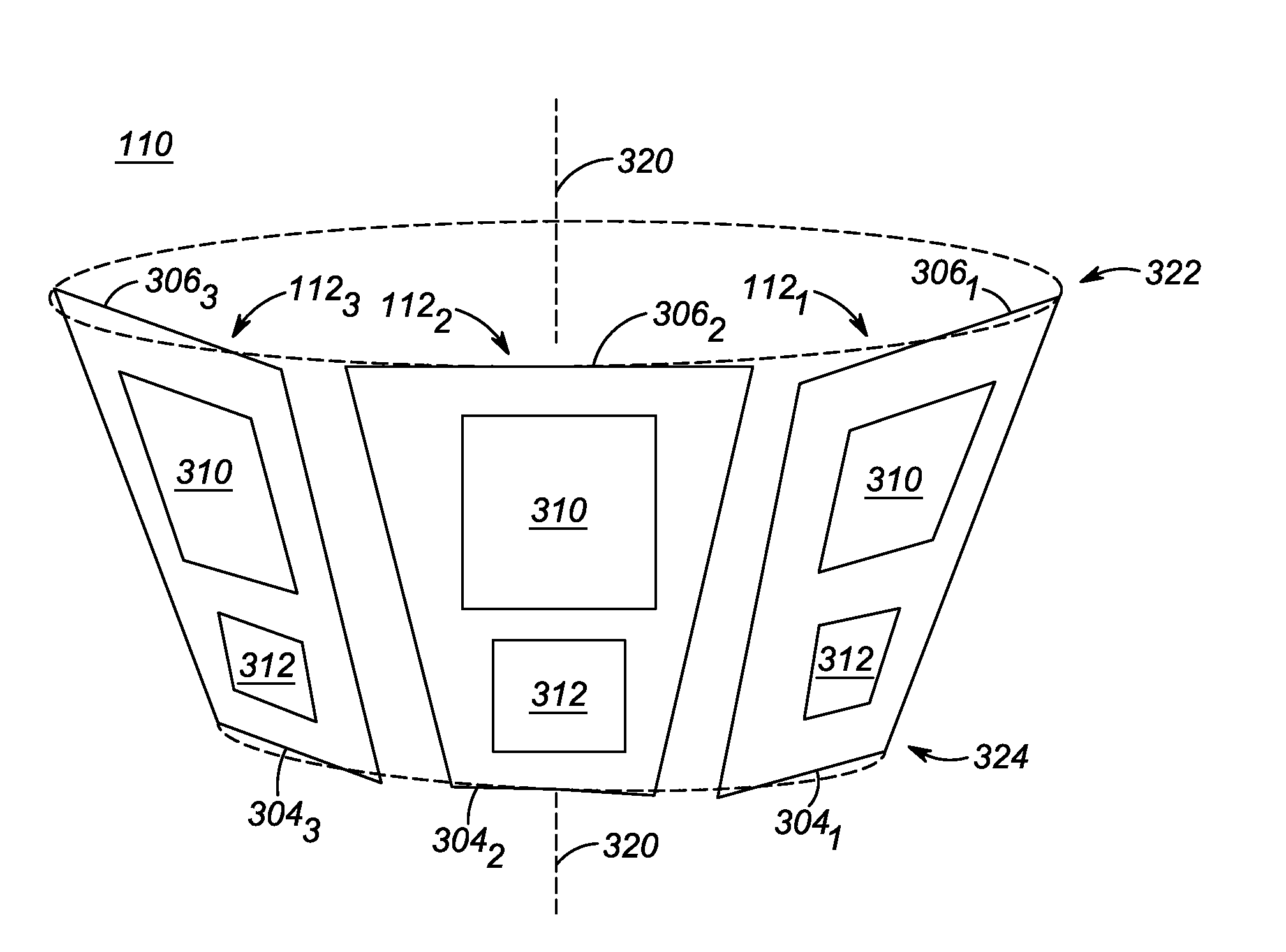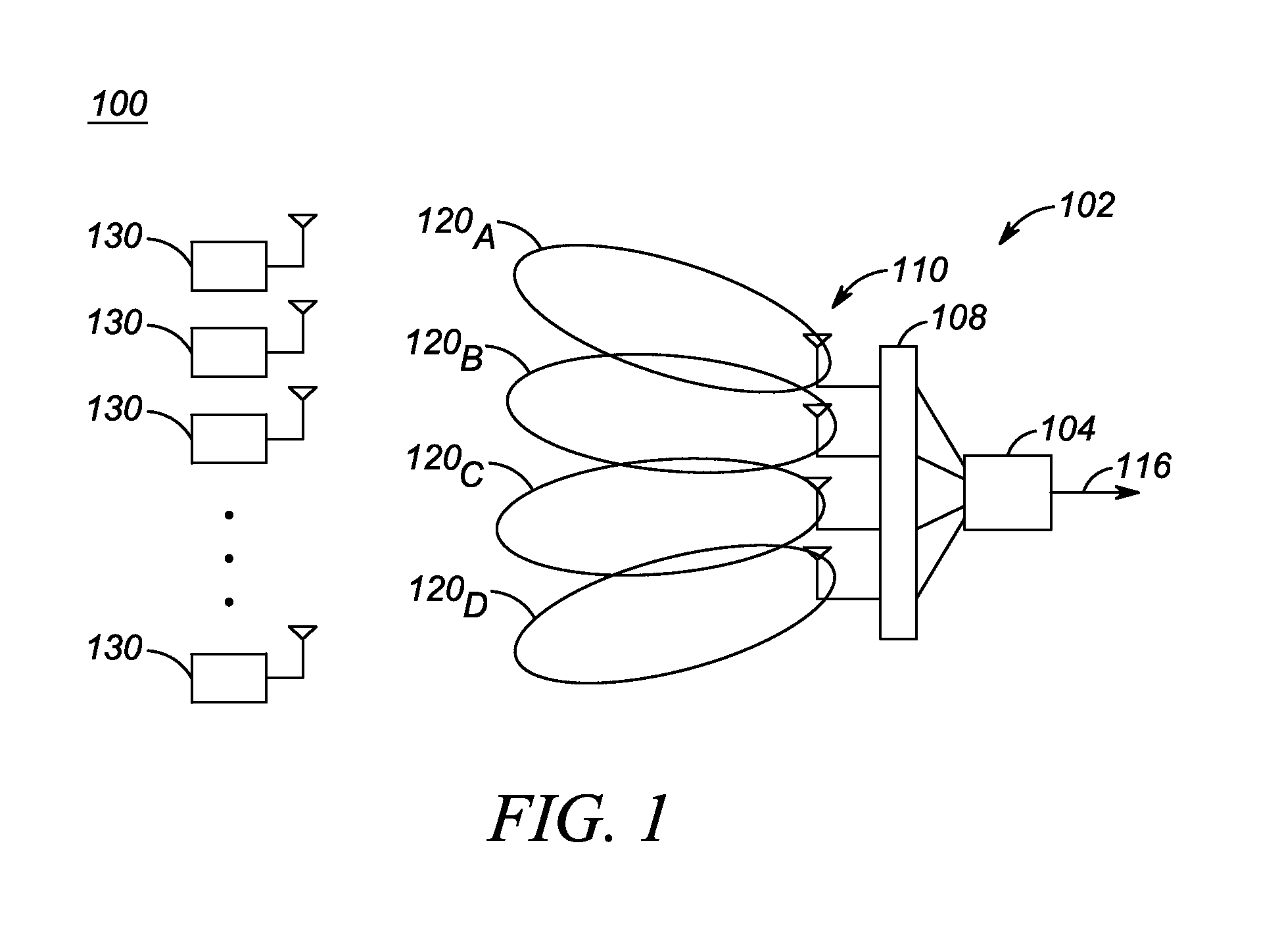Antenna array with asymmetric elements
a technology of asymmetric elements and antenna arrays, applied in the field of circular antenna arrays, can solve problems such as constructive interference and interference with rf coverag
- Summary
- Abstract
- Description
- Claims
- Application Information
AI Technical Summary
Benefits of technology
Problems solved by technology
Method used
Image
Examples
Embodiment Construction
[0013]Accordingly, to address the need for a Radio Frequency Identification (RFID) reader capable of transmitting with high directivity, an antenna array is provided for an RFID reader, which antenna array includes multiple antenna elements circumferentially distributed around a longitudinal axis of the antenna array. Each antenna element includes multiple patch elements disposed above one or more underlying substrates and wherein the multiple patch elements of each antenna element are disposed on an outer side of the antenna element. Further, one or more of the antenna elements is an asymmetric antenna element, wherein a first end of the asymmetric antenna element is wider than a second, opposite end of the asymmetric antenna element, wherein a first patch element disposed proximate to the first end of the asymmetric antenna element is larger than a second patch element disposed proximate to the second end of the asymmetric antenna element, and wherein a resonant frequency associat...
PUM
 Login to View More
Login to View More Abstract
Description
Claims
Application Information
 Login to View More
Login to View More - R&D
- Intellectual Property
- Life Sciences
- Materials
- Tech Scout
- Unparalleled Data Quality
- Higher Quality Content
- 60% Fewer Hallucinations
Browse by: Latest US Patents, China's latest patents, Technical Efficacy Thesaurus, Application Domain, Technology Topic, Popular Technical Reports.
© 2025 PatSnap. All rights reserved.Legal|Privacy policy|Modern Slavery Act Transparency Statement|Sitemap|About US| Contact US: help@patsnap.com



